Wild Skyway continued
Can the A.T. Save Birds in Peril?
“Every stretch of the Trail is significant to the future of migratory and resident birds…”
In today’s unraveling natural world, the A.T.’s significance is paramount. Strategic land acquisitions to the East’s wild conservation backbone add to a protected landscape. Size, quality, and diversity of bird habitat matter — the bigger and wilder the better, especially in a time of crisis.
“We are witnessing the collapse of the North America avifauna,” Marra says. “We are not looking at an individual single cause — like DDT —of the past that we could get rid of to save species. We are now seeing multiple and interacting effects that are driving declines.” The depletion of birds is personal to Marra, who recalls a favorite phenomenon where he grew up in Connecticut in the 1970s. “I used to see long ribbons of nighthawks migrating in the fall over the mountains, but not anymore.”
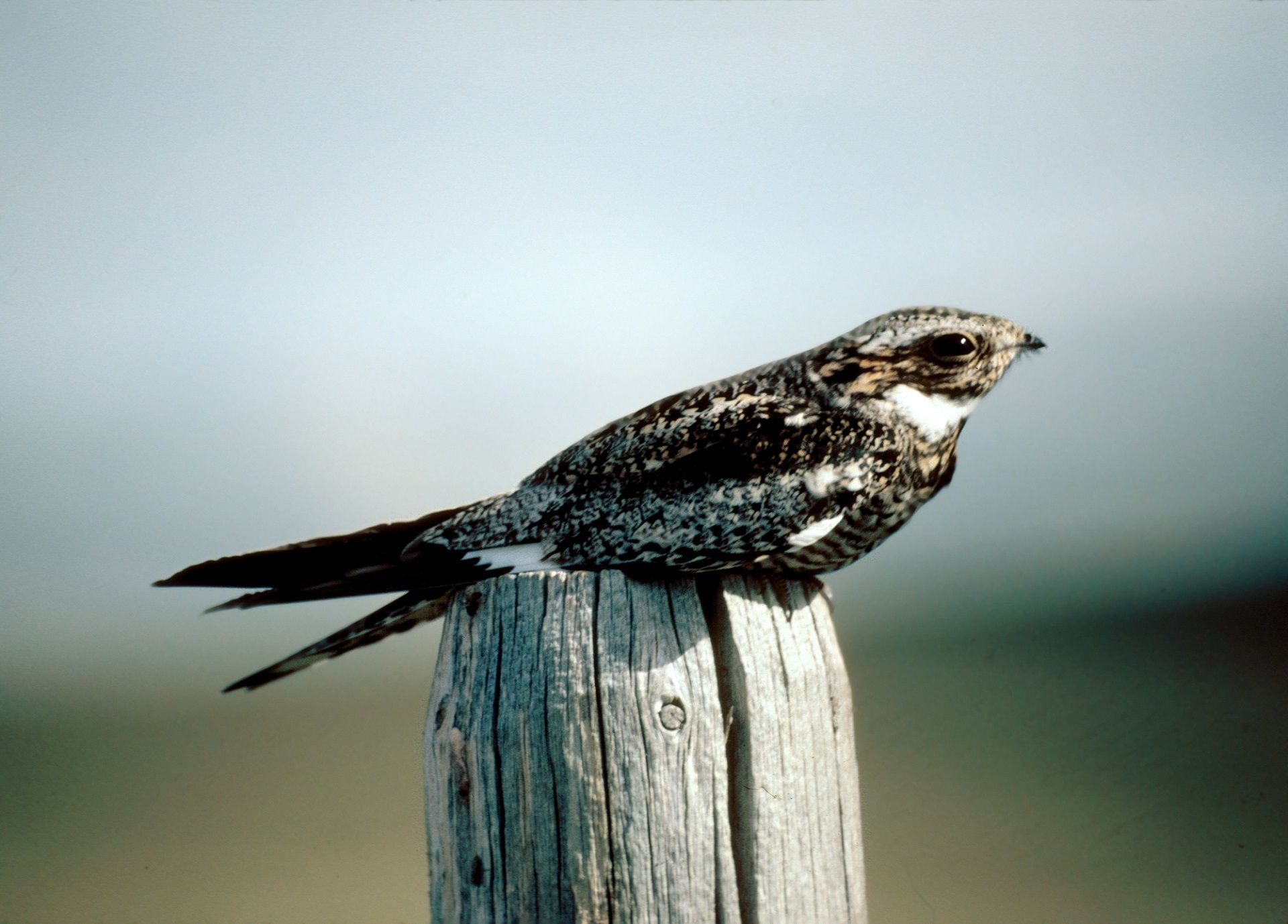 The common nighthawk has seen its numbers drop by 61 percent in recent decades.
The common nighthawk has seen its numbers drop by 61 percent in recent decades.
Common nighthawks chase the day’s end, giving a definitive high peeeeent call as they zoom after their insect prey, making the slender-winged birds vulnerable to pesticides. Their numbers have fallen by 61 percent. Still, they remain valiant ultramarathoners, flying from as far away as northern Canada to Argentina.
Up to a billion birds die annually in collisions with glass windows alone. Every stretch of the Trail is significant to the future of migratory and resident birds, including these key geographic regions: Maine’s 100 Mile Wilderness, Pennsylvania’s Kittatinny Ridge, and North Carolina and Tennessee’s Roan Highlands.
Bicknell’s Thrush – Katahdin’s Best Kept Secret
From Monson, Maine to Katahdin — the famed northern terminus of the A.T. — hikers of the 100-Mile Wilderness immerse in denizens of the far north, from loons to spruce grouse, gray jays, and ravens. On the high slopes of Katahdin itself nests one of the rarest birds of the A.T. The Bicknell’s thrush is an extreme specialist, living on the brink of extinction. This operatic songster nests in stunted balsam firs and bushes near the tops of peaks only in New England and Canada, then flies to the Dominican Republic for winter.
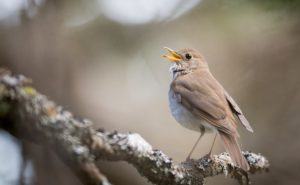
Baxter State Park, a 209,644-acre wilderness haven that includes Katahdin, is a stronghold. Protecting mountaintops from new ski areas, towers, and turbines is critical to saving the Bicknell’s thrush. Scientists estimate a breeding population of only 110,000 in its limited range. All wildlife that lives at the highest elevations face grave troubles from a rapidly warming climate. When their habitat becomes unlivable, they have nowhere to go.
“Bicknell’s thrushes are very hard to identify and find, so you have to be at the top of a mountain at dawn and hear their song,” says Nick Lund of Maine Audubon, who once climbed Saddleback Mountain (well south of Monson) in the pitch dark, shivering, and then was rewarded with its lovely chords at first light.
Lund takes pride in his work for Maine Audubon, which has been protecting birds and habitat since 1843. He says Mainers delight in the access the Trail provides to birds impossible to see from roadsides. He believes everyone who ventures on the Trail will never be lonely when they dip into avian life. “On the Trail, you have time to think deeply about things and it’s a perfect time to become a birder,” he says. “You are in nature all day long where you can become familiar with the birds around you.”
“If the Appalachian Trail is a long, intricately woven tapestry, then the thousands of people who volunteer to maintain, protect, and conserve it are the re-weavers.”
There may be no better place than out hiking with birds to consider their value to us. Stand on a rocky outcrop. Feel the winds that buoy the gliding eagle overhead. Drink in bird song. Know that our lives and those of birds are intimately connected.
“Birds are part of the tapestry of life that surrounds the earth,” says the Smithsonian’s Peter Marra. “They are the threads that make up the tapestry. Humans are just another thread. As we lose the threads, the tapestry disintegrates. We have an obligation to maintain the integrity of the tapestry on the earth not just for our own sake, but for our children.”
If the Appalachian Trail is a long, intricately woven tapestry, then the thousands of people who volunteer to maintain, protect, and conserve it are the re-weavers — repairing the frays, the tatters, and guarding all that is whole. “I want our children and their children to walk along the Appalachian Trail and also hear a wood thrush when surrounded by forest,” Marra continues, “or look up in a tree to see a broad-winged hawk perched there on its way to its wintering grounds in South America.”
Discover More
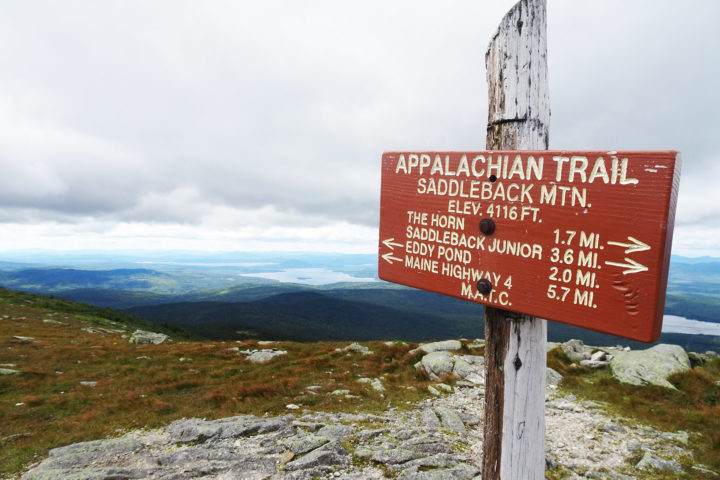
A Song at Dawn
The Search for Bicknell’s Thrush
Nick Lund of Maine Audubon shares his face-to-face encounter with one of the rarest (and most elusive!) birds in the country.
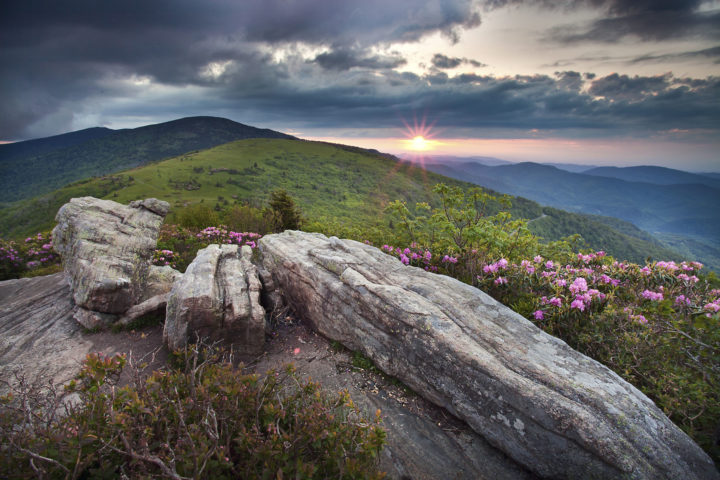
Roan Highlands Haven
Appalachian Balds are for the Birds
The iconic bald mountains along the Appalachian Trail in North Carolina and Tennessee are significant to the future of migratory and resident birds.
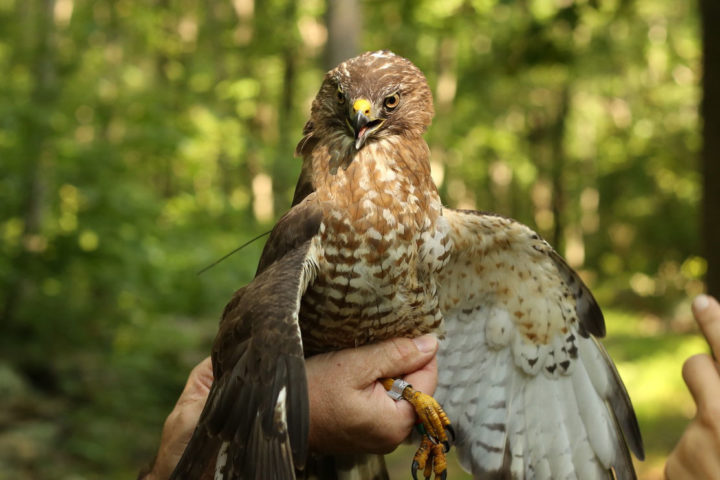
A Premier Migration Range
What Soars Above Kittatinny Ridge
The 125 miles of the Appalachian Trail that follow Pennsylvania's Kittatinny Ridge see an incredible amount of hawk and eagle migrations.
